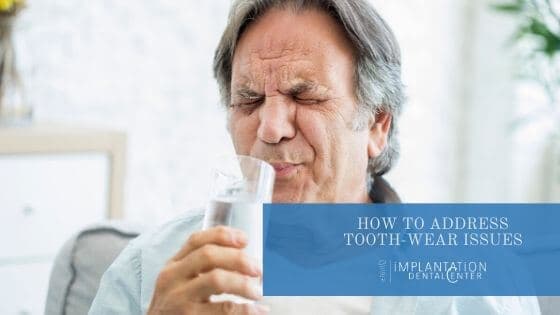With age, and as a result of other factors such as diet, genetics, lack of dental care, teeth can age and wear. This causes them to fall out, chip, turn yellow, and other unsightly consequences. Most of the time, the obvious solution to the problem is dentures. But dentures require further damage to the existing natural teeth, despite the fact that they can repair a smile.
Not everyone wants to solve this problem with dentures. Until recently, though, dentures were the only reliable solution to the problem. Without a thorough understanding of tooth-wear issues, dental professionals had difficulty coming up with effectively, less damaging, and long-lasting alternatives.
Now, there are better solutions. Because of advancing technology, it’s easier for dental professionals to examine the teeth and obtain a true understanding of their health.
Before attempting to correct tooth-wear issues, dental professionals have to complete a thorough exam to uncover the health of the jaw, muscles in the face, gums, and other aspects.
The exam generally aims to find out the following:
- Health and position of the temporomandibular joints
- Look for occlusal instability and identify the path of occlusion
- Search for symptoms of disharmony in the muscles of mastication
- Develop models based on this information and a full set of photos
All of this information helps the dental professional to have a better understanding of what is happening in and around their patient’s mouth. From there, it’s easier to develop a treatment plan to effectively address the wear and tear of the teeth.
A 3-D analysis is used to study the photos and information in order to get a clearer picture of the current state of the patient’s teeth. Then, the treatment plan is developed using the visuals. These visuals help the dental professional to obtain a better understanding of what the patient’s ideal smile can look like.
There are a number of checklists that have been developed to determine the current state of the teeth. Dental professionals use the following systems:
Occlusal Stability
This helps to determine the sizes of the teeth, positioning, and architecture. All of which provide clues to help the periodontist determine what needs to be repaired or built to obtain the ideal smile.
3-D
Again, this further helps establish positioning and pinpoint problems that need to be addressed. All of these steps are followed in order to ensure that the treatment plan that’s chosen requires the least amount of dentistry to obtain the optimal results. The purpose of fixing tooth-wear with this method versus dentures is to preserve what is left of the teeth so the patient’s smile is as natural as possible. Therefore, reducing the amount of dentistry needed is always a priority.
Provisional restorations
The purpose of these provisional restorations is to test drive the new smile, in a sense. Then, with the help of images taken, the lab can develop the crowns that are then cemented. This lengthy process ensures that the patient is getting the best result possible.
If you’re interested in learning more about corrections for tooth-wear issues, contact our Plantation dental office today.



